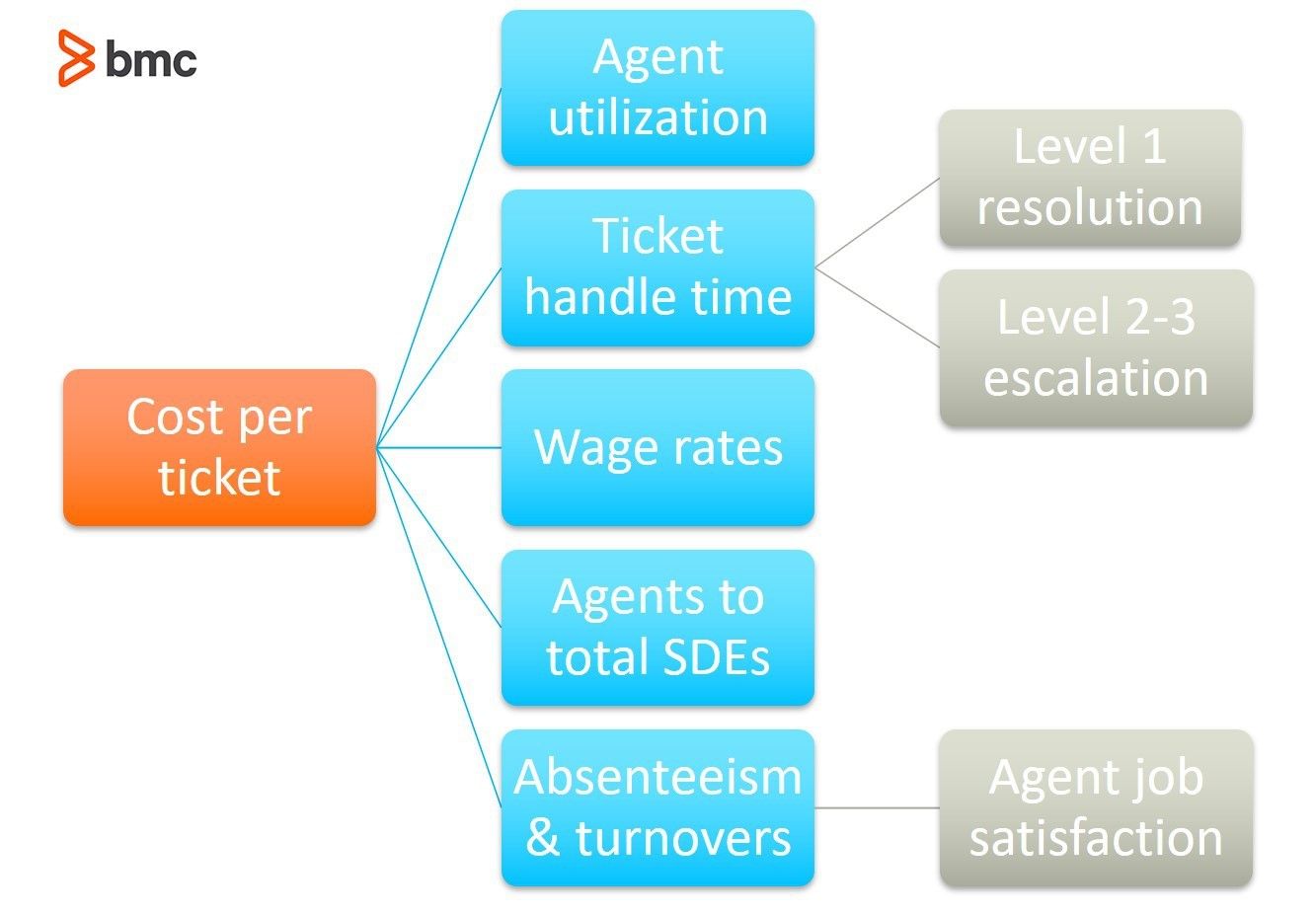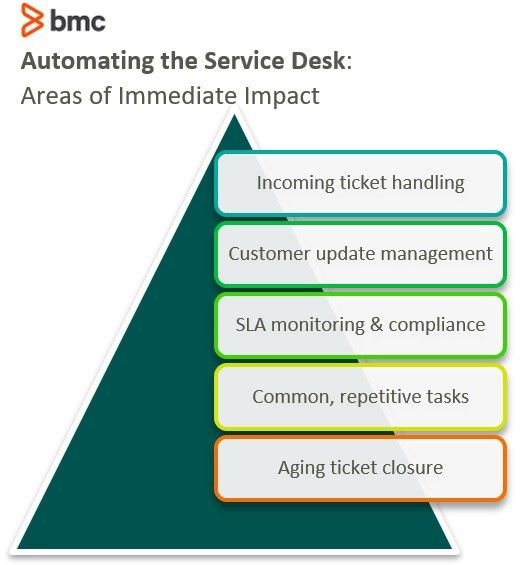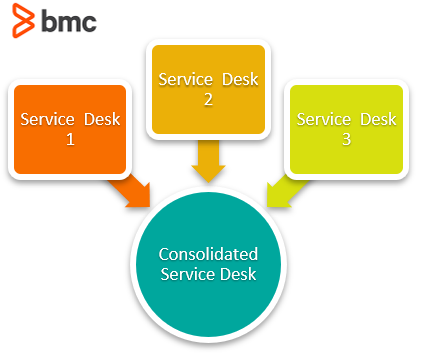Managing IT budgets is a juggling act. Keep the best workers that you have on the job at all times and you will have no problems. But the cost of keeping a group of highly specialized agents is significant. To reduce spending on service desks without leaving an organization unable to service requests of end-users is a difficult ask—and a difficult task.
Working out the cost of the average ticket is key to understanding the costs to your business on a range of metrics. This is where the use of data is necessary. You could bring that cost down looking at how your IT service desk works with users while still ensuring that your users (whether customers or employees) can get back to productivity quickly.
When your service desk can focus on the important stuff, the cost of the average incident will go down. Then, it’s a domino effect: A solution or service becomes more cost-effective, and management has an easier job justifying the value of your service desk agents.
(This article is part of our IT Cost Management Guide. Use the right-hand menu to navigate.)

The importance of a service desk
An IT service desk (or help desk) is for attending to the IT needs of the end-users in an organization. When you give every user the proper support they need, they can get back in working order without a loss of productivity.
Whether the service desk is working in-house or as an outside agency, service desk agents must provide value to any user who needs help. This involves quickly dealing with a range of IT issues, hardware or software, in-office or remote. The specialist knowledge of an IT service desk allows the requests of end-users to be dealt with in good time.
(Does your service desk have a mission & vision statement?)
The service desk generally provides support to employees in a number of ways:
- A phone call to help provide simple solutions through voice support
- Ticket support submitted to the IT service desk
- In-person support
- Remote support either through an organization’s intranet or over the internet
Much of what the service desk does is related to network issues, including:
- Resetting passwords
- Connecting to networks
- Allowing access to new network areas or software
- Other general troubleshooting tasks
While some of these issues need a trained agent, software can handle others.
Is a service desk worth the cost?
Although the costs of an IT service desk are significant, most companies understand that it is a necessary resource. Many organizations are looking to outsource their IT teams to keep costs down. An enterprise may prefer to get outside specialist help when needed to ensure the efficiency of resources and to manage costs.
Having a number of IT specialists on hand allows a company to:
- Cater to the needs of their customer base
- Improve customer satisfaction (CSAT)
- Support internal employees in day-to-day work
Although the constraints on budgets may be a huge challenge for some, the benefits of dedicated staff will help find a resolution to the difficulties that a user would often face. This allows management to analyze the data that shows a large team can better support the needs of every employee.
What is the Average Cost Per Ticket?
Working out the cost per ticket and then identifying ways to reduce that cost is a headache for many IT managers. The time between receiving tickets and resolving them to the satisfaction of the individual is the most important factor to consider—but exactly how much should we expect it to cost?
Take a look at some of the statistics around service desks:
- The average ticket cost per ticket is $15.56, with lows of $2.93 and highs of $46.69.
- The average cost per minute of a ticket is $1.60 (MetricNet)
- 5% of the average service desk’s budget is spent on staffing costs (MetricNet)
- A vast majority of support desks (91%) plan to include self-servicing options in the future (SDI)
(Explore more service desk benchmarks.)

Maximizing service desk value
There are several strategies you can look at to maximize the value of your service desk, without running up the budget.
Hire more service desk agents
Employ more staff, watch the tickets be resolved quicker. As the average internal support service desk receives on average 492 tickets per month and a staggering 69% of internal support tickets are resolved in one touch. This data shows that a trained agent can deal with issues and provide a solution quickly.
Hiring more staff and spreading the number of tickets makes the process simpler. Taking the volume of tickets per IT service desk specialist down allows for a quick response time in any enterprise. This cuts down on the time between receiving a ticket and the issue’s resolution, which leads to greater customer satisfaction.
Automate repetitive tasks
Doing away with repetitive tasks is the easiest way to improve your business’ efficiency. Free up your employees to deal with the difficult stuff and you will get the most out of them. This includes giving customers access to quality resources.
(Deploy service/help desk automation & explore best tools.)

Self-service options
A self-service program allows end-users to log into a portal and find solutions to their problems without needing to call or submit a ticket. Of course, this is no replacement for a dedicated service desk lead by IT professionals. Sometimes, some issues are too difficult to handle without specialist support.
Still, a self-service portal is an excellent way to raise customer satisfaction. An end-user can find solutions to simple problems, such as password resets, without having to escalate the problem.
Reducing the cost of the service desk
For the stressed IT manager, cost reduction can come in many forms. Reducing the cost per ticket can help deal with congested budgets and making sure that every end-user gets the appropriate service they need.
It can be difficult to manage resources, but there are many easy fixes that you can implement. Then, each incident becomes an easily solved problem by a trained agent and productivity can pick up again. But the focus needs to be on how to do this effectively.
Ask yourself, and your team, these questions to help determine a better way to handle service desk touches.
Can self-service and chatbots help?
Adopting self-service software is an easy way to deal with repetitive tasks such as password resets and basic functionality errors. These self-service programs can act as a knowledge base that a puzzled employee could search. (Here’s where a robust knowledge management system thrives.)
Introducing this technology to your business can then free up staff to focus on tasks that cannot be handled without the support of a specialist. Implementing an effective self-service platform can easily lower the number of tickets.
Another excellent way to do this is by implementing a chatbot. This will allow users to find their own solutions through the use of AI, not just relying on a knowledge base to guide them.
Can we reduce ticket handling time?
Although it can be difficult to reduce the amount of time, the value of every service desk employee rises when they can deal with issues quickly. Efficiency leads to great savings. That’s why first contact resolution (FCR) is a critical service/help desk metric.
To reduce ticket handling time, first analyze and then streamline—including the very way that you fix issues or handle requests. Consider these strategies:
- Employing highly trained and capable individuals.
- Ensuring that the organization continues to develop all individual agents throughout their career. (Stagnation is fatal to productivity.)
- Using technology to handle a significant proportion of easily solved tasks.
These factors will bring down the average time that a service desk will have to deal with an issue thanks to experience, expertise, and better skills in dealing with a given end-user. In a way, employing more specialists can actually reduce the overall service desk cost.
How small can a team be?
Reducing the staff often is an attractive option for management—cut salaries, cut costs. But the truth is that a smaller IT team leads to a worse user experience.
The recommended number of service desk specialists is 1 service desk employee to every 70 workers in a company. When the ratio is lower than this, incidents are dealt with more slowly and customer satisfaction drops. The cost for this is inestimable but can be significant, even more than spending to keep teams at an appropriate size.
Moreover, the average downtime of an employee that requires IT support causes a large cost to business processes. If an employee can’t work for a full day because of a computer issue that takes a long time to resolve, that is another cost you won’t recoup.
As the cost per ticket goes up, so does the disruption that is caused to a business.
Can we consolidate the service desk?
Some companies run multiple service desks, not a single one that services the entire employee or customer base. They might do this because of geography, service portfolios, and skillsets of agents and who they’re servicing.
If you’re in this situation, look at the obstacles to consolidating the service desk. Several strategies can work together to consolidate the service desk effort, like:
- Creating a strategic vision
- Enlist volunteers who support this move
- Institute change

Can we be proactive?
For some problems, the best approach is being proactive. Train your non-IT specialists, then give them tools to treat their issues on their own. This can be done through the use of a well-developed knowledge base, but the effort cannot stop there.
By delivering quality training to your non-IT specialists, you can reduce the cost per ticket by removing some tickets altogether. The costs of training your employees over the course of a year have direct implications on the cost of maintaining an IT team which only deals with password resets.
Reducing service desk cost isn’t easy
Reducing costs is never easy. Getting a specialist group of professionals to reduce the cost per ticket is not easy either. But effective management can lead to the jobs an IT specialist employee has to deal with (resetting a password or replacing hardware) being reduced in volume.
Setting up your working environment with intelligent, cutting-edge support solutions can make operations smoother, reduce spending, and improve the value your staff bring. This means introducing an effective system that can automate the simple stuff and free up staff to fix the bigger issues.
BMC supports the service desk
BMC Helix ITSM is industry-leading service management that uses intelligent automation to transform best-practice ITSM principles into the modern agile service solutions businesses need.
In fact, BMC Helix ITSM can help you realize 354% ROI and improve service desk efficiency up to 45%.
(Learn more about BMC Helix ITSM.)
Related reading
- BMC Service Management Blog
- Service Request Management in ITIL® 4, part of our ITIL 4 Guide
- 5 Metrics & KPIs All Service Desks Need
- Pitfalls of Choosing the Wrong IT Service Desk Metrics
- Agile ITSM: How Agile & Service Management Can Work Together
- CapEx vs OpEx: Capital Expenditures & Operating Expenses Explained
These postings are my own and do not necessarily represent BMC's position, strategies, or opinion.
See an error or have a suggestion? Please let us know by emailing blogs@bmc.com.






